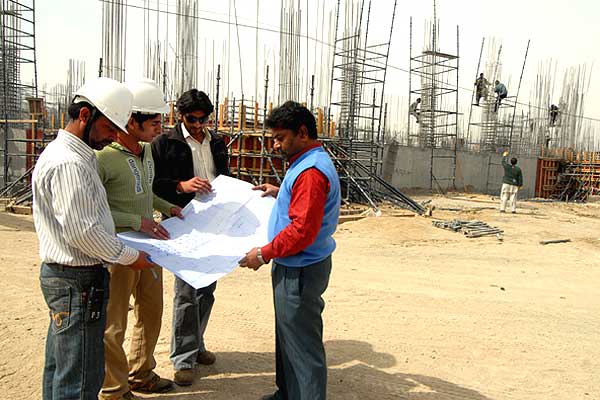The construction industry in India is a highly fragmented landscape. Just one look at the numbers gives you a clear idea –
| 29,600 small scale enterprises | Less than 200 employees |
| 1,050 medium scale enterprises | 200-500 employees |
| Around 350 large enterprises | 500+ employees |
On top of these formal companies, there are more than 120,000 unorganized construction contractors which are not formal organizations.
It’s quite easy to see how most of the construction work in the country is done by the small scale construction contractors. Given their share in the industry, the problems that small contractors face also become important determinants of the overall productivity of the industry.
A survey of the small scale construction contractors in India has revealed that ‘involvement of project owners at the construction phase’ is seen as one of the biggest problems by small contractors.
This is indicative of the difficulty the most small construction contractors are facing in close coordination with the project owners. Interestingly, the same study also revealed that coordination problem is not quite important for large and medium scale construction contractors.
The finding is also surprising, since the project owners are the reason for the contractors to be working on a project. So there is no way to escape from their involvement. But rather the only solution is to welcome their participation by –
- Using properly streamlined IT tools to actively collaborate with project stakeholders
- Get complete understanding of the scope before commencing with construction to minimize any modifications or rework in the middle of the construction activities
IT tools for collaborating in construction
Larger construction companies can take the advantage of their scale to set up sophisticated software that enables close coordination with project owners. Benefits are many – enabling these firms to meet quality expectations, minimize delays, to build better trust and stronger relationships with clients.
Smaller companies lack the scale advantage to invest in IT for close coordination. In turn they risk failure to meeting client expectations. Hence the coordination with project owners or rather lack of it is seen as a great difficulty by the smaller construction companies.
Collaborative cloud based software – like WorkPack –enables contraction team to collaborate on documents, drawings and project schedule. This enables contractors to work hand in hand with the project owners. Software as a service (SaaS) solutions are available to any contractor irrespective of the scale and go a long way in boosting relationship with the customers.
Guarding from changes in scope
Larger companies usually have stronger contracts with project owners and also a better negotiating position in case of any changes in scope midway through the construction phase.
Smaller firms struggle when a surprise pops up during the construction phase. Resulting delays may put their pending payments on hold. This is not a good place to be. One solution is to have as much clarity and transparency on scope as possible and have a stronger contract.
But even in case of 100% clarity beforehand, any small misinterpretation can result in significant rework. To minimize this possibility of misinterpretation, every stakeholder should have complete visibility of the construction progress. The best way is to always keep the project owner in the communication loop and updated of progress on site.
WorkPack helps the project owners and project managers to have complete visibility of the progress of execution at site. Whenever things start to drift from planned course of action, relevant stakeholders are alerted and major deviations prevented.
Do you manage construction projects? How to you coordinate with the end project owners? What is the best strategy to avoid surprises from the project owner during construction phase? Leave your comments which can help others lift their game.



No Comments